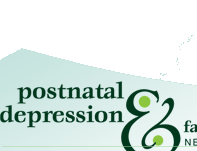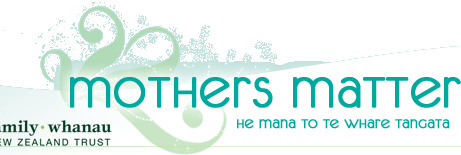 |

First Generation Antipsychotics
This section is designed to inform professionals.
(Also known as traditional antipsychotics, neuroleptics, older antipsychotics)
- Those still available in New Zealand include Chlorpromazine (Largactil), Haloperidol (Serenace), Trifluperazine (Stelazine), Zuclopenthixol (Clopixol)
- Antipsychotics have been used since the 1950’s when chlorpromazine was first synthesized as an antihistamine for allergies, then in the 1960’s haloperidol was synthesised as an analgesic. By the 1970s, the early ‘atypicals’ Clozapine, Sulpiride, Thioridazine were introduced although many still think of these ones as typical antipsychotics.
- The distinction between typical and atypical is related to the ability of the medication to block the effects of dopamine in the brain. With less blockade of dopamine receptors, the more atypical the medication becomes, and hence each has different effects and side effects.
- The problem with all of the typical antipsychotics is their varying amounts of side effects.
- The antipsychotics are typically used to treat the symptoms of psychosis (schizophrenia, bipolar disorder), but in smaller doses can be used for sedation, sleep, and the management of anxiety.
- Some of the newer antipsychotics also have antidepressant effects.
- An excess of dopamine in certain pathways of the brain is thought to be responsible for the symptoms of psychosis. Antipsychotics block mainly the dopamine receptors in the brain and so stop the turnover of dopamine; hence they have an antipsychotic effect. Depending on how many of the different types of dopamine receptors (we know there are many different ones) are targeted and the strength of this blockade, plus the strength and intensity of other types of receptors targeted (e.g. histamine and choline) leads to each individual antipsychotic medication having different side effect profiles and efficacy.
Use in Pregnancy
All are category C
- As the typical antipsychotics have been in existence for many years there is a large amount of clinical experience in prescribing these medications but relatively few published data.
- There is some evidence that chlorpromazine may restrict uterine blood flow, and may also compromise the fetus if it causes postural hypotension in the mother.
- There have been some reports of extrapyramidal symptoms in babies soon after birth, but once again these are mainly case reports.
- Studies have followed the longer term impact of exposure to typical antipsychotics during pregnancy. In two studies (1,2) children exposed to chlorpromazine during pregnancy had no obvious short or longer term effects but methodological limitations mean the results must be interpreted with caution. One study (3) showed children exposed to more than two months of typical antipsychotics during pregnancy were 3 cm taller than those not exposed at 7 years of age.
- There does not seem to be any firm data on depot preparations. If someone is on a depot there are probably significant adherence issues and therefore it is probably unwise to discontinue. However towards the end of the pregnancy it is best to avoid a dose immediately prior to delivery if possible and to switch to oral medication for a short period until delivery.
Use in breastfeeding
Category: L2-Haloperidol, L3-Chlorpromazine
- As with most drugs all the antipsychotics have been detected in breast milk in varying amounts.
- Of over 25 mother-infant pairs studied in the literature there were very few adverse effects noted during the neonatal period (5). Many infants were followed up to 1 yr of age.
- One study of one case of a mother taking unmeasured levels of chlorpromazine reported a drowsy infant but it was hard to ascertain whether this was due to the medication (6)
- One study, Yoshida et al (8) suggested a possible association between use of these medications in breast feeding and slight reduction in the Baileys score, however there were significant limitations to this study and the results need to be interpreted with caution. This study has yet to be replicated.
- Overall there does not seem to be any evidence to discourage mothers from breastfeeding if they are receiving recommended doses of individual drugs such as haloperidol or chlorpromazine
Overall haloperidol is probably the safest traditional antipsychotic in pregnancy and breastfeeding.
References
1. Kris, E.B. (1965). Children of mothers maintained on pharmacotherapy during pregnancy and postpartum. Current therapeutic research 1965, 7: 785 – 9.
2. Stika, L., Elisova, K., Honzakova, L., Hrochova, H., Plechatova, H., Strnadova, J., et al. (1990) Effects of drug administration in pregnancy on children’s school behaviour. Pharm Weekbl (Sci), 12: 252 – 5.
3. Platt, J. E., Friehoff, A. J., Broman, S. H., Bond, R. N., Laska, E. Lin, S. P., (1988). Effects of prenatal exposure to neuroleptic drugs on children’s growth. Neuropsychopharmacology, 1: 205 – 12.
4. Yaris, F., Cunay, U., Kesim, M., Kadioglu, M., et al. (2005). Psychotropic drugs in pregnancy; a case control study. Progress in Neuro-psychopharmacology and Biological Psychiatry, 29: 333-338.
5. Yoshida, K., Smith, B., Kumar, R., (1999) Psychotropic drugs in mother’s milk: A comprehensive review of assay methods, pharmacokinetics and of safety of breast feeding. J Psychopharmacol, 13: 64-80
6. Wiles, D. H., Orr, M. W., Kolakowska, (1978) T., Chlorpromazine levels in plasma and milk of nursing mothers. British Journal of Clinical Pharmacology, 272-273.
7. Yoshida, K., Smith, B., Craggs, M., Kumar, R., (1998). Neuroleptic drugs in breast milk: a study of pharmacokinetics and of possible adverse side effects in breast fed infants. Psychol Med, 28: 81-91.
|
 |






